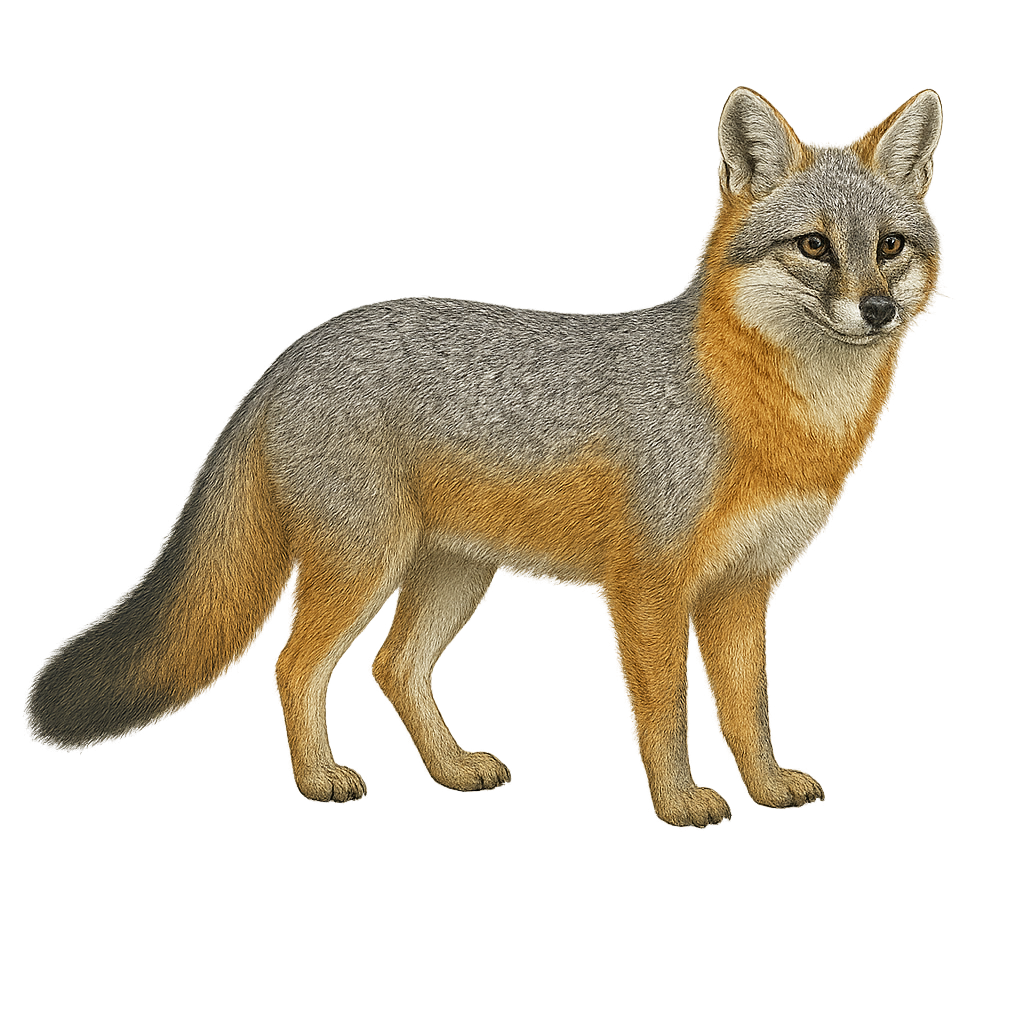Your wildlife photography guide.
Explore the gray fox in detail, study its behavior, prepare your shots.
Where to observe and photograph the gray fox in the wild
Learn where and when to spot the gray fox in the wild, how to identify the species based on distinctive features, and what natural environments it inhabits. The WildlifePhotographer app offers tailored photography tips that reflect the gray fox’s behavior, helping you capture better wildlife images. Explore the full species profile for key information including description, habitat, active periods, and approach techniques.
Gray fox
Scientific name: Urocyon cinereoargenteus

IUCN Status: Least Concern
Family: CANIDAE
Group: Mammals
Sensitivity to human approach: Suspicious
Minimum approach distance: 10 m
Rut period: January to February
Gestation: 53-63 jours
Births: March to April
Habitat:
Dense forests, scrublands, mountainous regions
Activity period :
Mainly active at night, generally discreet during the day.
Identification and description:
The gray fox, or Urocyon cinereoargenteus, is a medium-sized canid known for its silver-gray fur, reddish legs, and bushy tail. Unique among canids, it can climb trees, allowing it to escape predators and forage for food. It primarily inhabits dense forests, scrublands, and mountainous regions of North and Central America. An omnivore, it feeds on small mammals, birds, insects, and fruits. The gray fox is generally nocturnal and crepuscular, preferring to avoid humans. Although widely distributed, it is often elusive and difficult to spot.
Recommended lens:
400 mm – adjust based on distance, desired framing (portrait or habitat), and approach conditions.
Photography tips:
To photograph the gray fox, it is advisable to use a telephoto lens of at least 400mm to capture detailed images from a distance, as this animal is suspicious and prefers to stay away from humans. Look for it at dawn or dusk when its activity peaks. Be patient and discreet, wearing neutral-colored clothing to blend into the environment. A tripod can be useful to stabilize the camera in low-light conditions.
The WildlifePhotographer App is coming soon!
Be the first to explore the best nature spots, track rutting seasons, log your observations, and observe more wildlife.
Already 1 432 wildlife lovers subscribed worldwide

